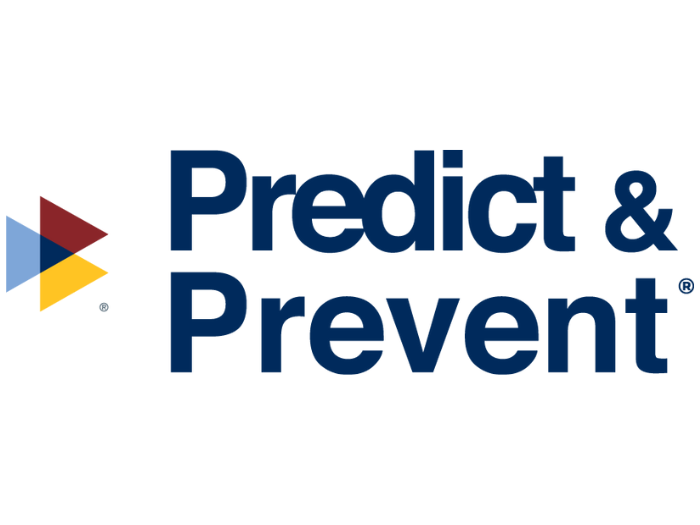Businesses Report Increase in Cyberattacks in 2024

Despite a drop in perceived risk, cyberattacks are increasing in frequency and sophistication, with payment diversion fraud emerging as a potent threat and businesses ill-prepared to manage the financial and reputational risks, according to a Hiscox survey on cyber readiness.
Cyberattacks dropped to third place among perceived top business risks in 2024’s survey, down from first place in 2023 and 2022, the survey found. However, 67% of firms surveyed report an increase in cyber incidents over the past year, with the average number of attacks per organization rising to 66 from 63.
Hiscox surveyed 2,150 cyber security professionals in eight countries, including 400 U.S. participants. The survey found that the number of cyberattacks varies by size of company, with firms that have 250-999 employees facing the largest average number of attacks, or 109. Larger firms, with 1,000 or more employees, reported 94 cyberattacks on average, while companies with 50-249 employees saw 53 incidents on average.
Payment diversion fraud has emerged as a particularly potent threat, affecting 58% of organizations, up sharply from 34% in the previous year. This type of attack, where cybercriminals redirect legitimate payments to their own accounts, can result in significant financial losses for businesses.
Adding to the concern is the fact that many companies are ill-prepared for these financial risks. More than a quarter of business leaders, 26%, admit their organizations lack sufficient resources to effectively manage the financial threats associated with cyber security incidents.
Reputational Concerns
While the immediate financial impact of cyberattacks is a top concern, business leaders are increasingly worried about the long-term reputational damage these incidents can cause. Among respondents, 61% believe that a cyberattack could significantly harm their business’s reputation, and 64% fear they risk losing business if they fail to handle client and partner data securely.
According to the survey, the adverse impacts of cyberattacks have increased in the past 12 months were. Some 47% of respondents reported greater difficulty attracting new customers after a cyberattack in 2024, up from 20% in 2023. Lost customers was reported by 43%, double the 21% citing this impact in 2023, and bad publicity was reported by 38%, up from 25%.
Ransomware Response Drivers
The fear of reputational damage is also influencing how companies respond to ransomware attacks. When faced with such threats, organizations are primarily motivated by three factors: protecting customer data, safeguarding their reputation, and recovering their data. These priorities underscore the complex decision-making process companies face when dealing with cyber extortion, Hiscox noted.
However, giving in to ransom demands is far from a guaranteed solution. Only 18% of victims who paid a ransom were able to fully recover their data, the report stated.
Entry Points and Vulnerabilities
Business email compromise remains the primary entry point for cyberattacks for the second consecutive year, at 54% of attacks. However, corporate servers in the cloud have climbed to the second most common point of entry, at 50%, followed by employee access points at 46%.
The rapid adoption of new digital technologies is introducing additional security risks, the report noted. Bring Your Own Device (BYOD) policies are a growing concern, with 44% of organizations reporting an increased risk from employees using personal devices for work. These devices often lack up-to-date security software and centralized control, making them more susceptible to malware, phishing attacks, and data breaches, according to the report.
Despite security concerns, 70% of organizations have already integrated Generative AI (GenAI) into their operations. This widespread adoption comes with its own set of risks, as 56% of business leaders believe GenAI will significantly impact their cybersecurity risk profile, the survey found.
Resource and Expertise Gaps
Many organizations are struggling to keep pace with the evolving threat landscape, according to Hiscox. A third of firms (32%) admit to falling behind in adopting necessary cybersecurity technologies. The shortage of skilled professionals compounds this problem, with 52% of firms reporting a critical lack of cybersecurity expertise.
This skills gap is having a tangible impact on security measures, as 34% of organizations acknowledge that their cybersecurity efforts are compromised due to a lack of expertise in managing emerging technology risks.
Cyber resilience has become a critical component of business strategy. Three-quarters of firms recognize its vital importance, with 44% considering it extremely important. However, despite this awareness, 40% of businesses classify their cyber resilience maturity as either “basic” or “ad hoc,” indicating a lack of formal processes and limited training and awareness. Also, 34% of leaders admit their organizations are not adequately prepared to handle cyber attacks.
Strategic Priorities and Investment
To address these shortcomings, businesses are focusing on key areas for improvement. Over the next 12 months, top priorities for enhancing cyber resilience include updating existing security technologies (36%), improving employee awareness (32%), and enhancing threat detection capabilities (31%), the survey found.
By 2030, two-thirds of firms aim to implement zero trust architecture, a strategy that requires strict verification for all users attempting to access sensitive data, regardless of their location inside or outside the network.
View the full Hiscox report here. &










